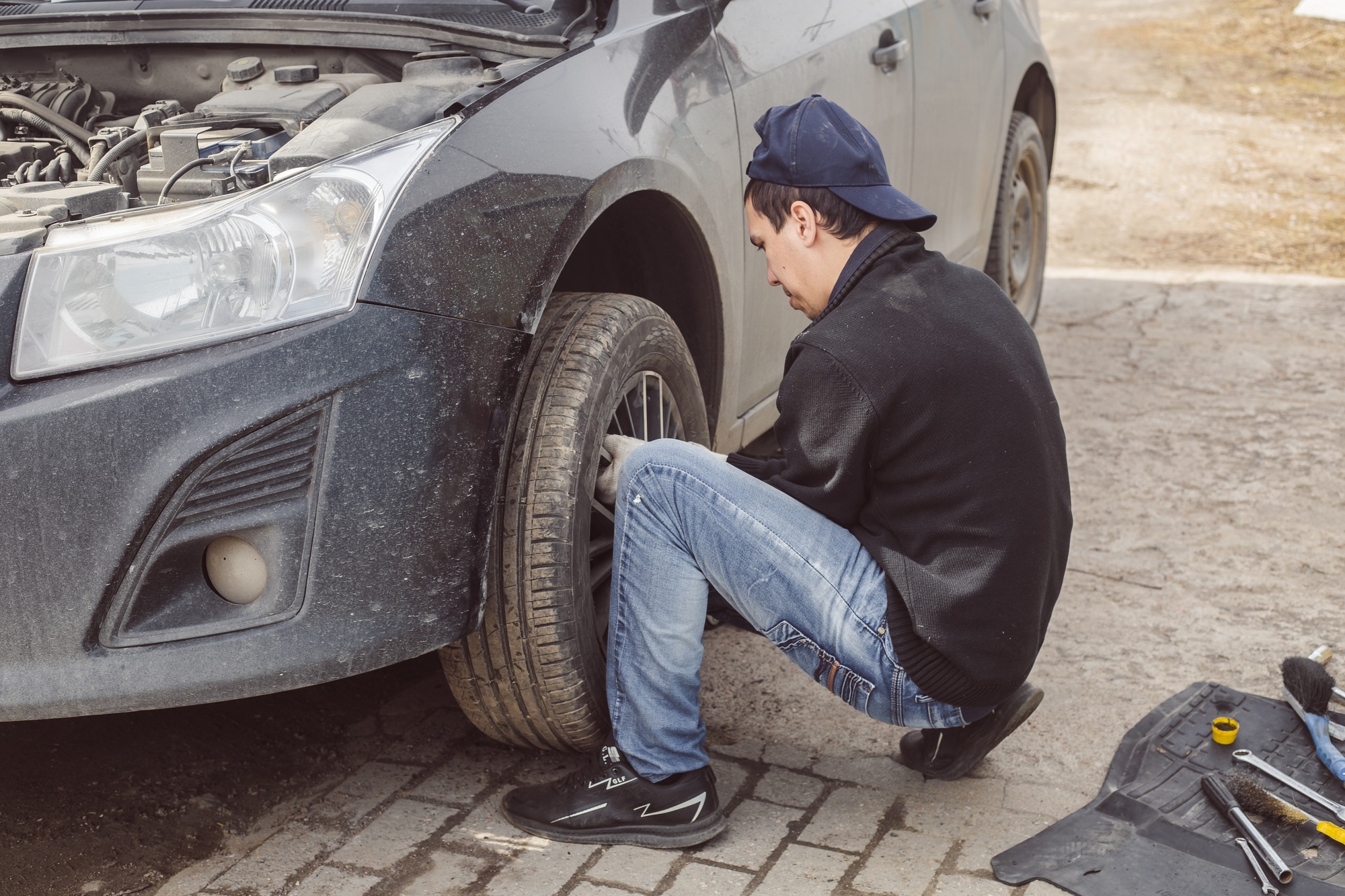A slow tyre leak can be deceptively dangerous. Unlike a sudden flat, a slow leak gradually compromises your tyre’s integrity, affecting handling, fuel efficiency, and overall safety. Ignoring it might lead to costly repairs or even accidents. Therefore, understanding how to identify a slow tyre leak before it gets worse is crucial for any vehicle owner. This guide provides detailed, actionable steps to spot these subtle issues early. We’ll also explore why timely detection matters and how Crossroads Helpline can offer reliable support for these situations.
Why Detecting a Slow Tyre Leak Matters

Slow leaks aren’t just minor inconveniences; they signal underlying issues that can worsen over time. Driving on under-inflated tyres can lead to:
- Increased wear and tear: Low pressure causes uneven tread wear.
- Reduced fuel efficiency: Under-inflated tyres create more rolling resistance, which burns more fuel.
- Safety risks: Poor traction and handling compromise your control, especially during emergencies.
Identifying slow leaks early means saving money and ensuring your safety. Let’s explore the signs and methods to detect them effectively.
Signs of a Slow Tyre Leak You Shouldn’t Ignore
Detecting a slow tyre leak often involves keen observation and timely action. Here are common indicators to watch out for:
- Frequent refills: If you find yourself adding air more often than usual, there might be a slow leak.
- Changes in handling: Does your vehicle pull to one side? This could indicate uneven tyre pressure.
- Unusual noises: A hissing sound while driving or parked may point to a leak.
- Dashboard alerts: Modern cars have Tyre Pressure Monitoring Systems (TPMS) that signal low pressure.
These signs are early warnings. Addressing them promptly can prevent larger issues.
Methods to Identify a Slow Tyre Leak

1. Visual Inspection
Start with a thorough visual inspection. Look for:
- Embedded objects: Nails, screws, or glass might be lodged in the tread.
- Cracks or cuts: Examine the sidewalls and tread for visible damage.
- Bulges or bubbles: These indicate internal damage and should be addressed immediately.
Regular checks, especially before long trips, can help spot issues early.
2. Conduct the Soapy Water Test
One of the simplest and most effective methods to detect a slow leak involves soapy water:
- Mix water and liquid soap in a spray bottle.
- Spray it over the tyre, especially around the valve stem, tread, and sidewalls.
- Look for bubbles forming, indicating escaping air.
This DIY test is affordable and reliable, making it a go-to method for many vehicle owners.
3. Use a Tyre Pressure Gauge
A tyre pressure gauge provides an accurate reading of your tyre’s pressure. Here’s how to use it:
- Remove the valve cap and press the gauge onto the valve stem.
- Compare the reading with the manufacturer’s recommended pressure.
- Check all four tyres, including the spare.
Significant pressure drops indicate a slow leak. Regular monitoring ensures your tyres remain in optimal condition.
Preventative Measures to Avoid Slow Leaks
Preventative maintenance can significantly reduce the risk of slow leaks:
- Regular inspections: Check your tyres at least once a month.
- Proper inflation: Maintain recommended tyre pressure. Under or over-inflation can cause damage.
- Avoid rough terrain: Sharp objects on unpaved roads often cause punctures.
- Valve stem maintenance: Replace damaged valve stems promptly.
By adopting these habits, you extend the lifespan of your tyres and enhance safety.
Crossroads Helpline: Your Trusted Partner in Tyre Assistance

When dealing with slow leaks, professional support can make all the difference. Crossroads Helpline offers:
- 24/7 roadside assistance: Immediate help when you need it most.
- Expert inspections: Professional assessments to detect and fix slow leaks.
- Mobile tyre services: Convenience at your location, saving you time and effort.
Their commitment to quality service ensures you’re never stranded or unaware of potential tyre issues.
Common Causes of Slow Tyre Leaks
Understanding the causes can help you prevent future leaks:
| Cause | Description |
|---|---|
| Punctures | Small nails or glass can create slow leaks. |
| Valve Stem Issues | Damaged or loose valve stems often cause leaks. |
| Wheel Damage | Corroded or bent rims may not seal properly with the tyre. |
| Bead Leaks | Air can escape from the tyre bead (where it meets the rim). |
| Temperature Changes | Extreme cold or heat affects tyre pressure and may reveal slow leaks. |
Recognizing these causes helps in addressing the root of the problem, ensuring a comprehensive solution.
When to Seek Professional Help
While DIY methods are useful, some situations require expert intervention:
- Persistent leaks: If a leak persists despite multiple inspections, consult a professional.
- Visible damage: Bulges, large cuts, or embedded objects need professional repair or replacement.
- TPMS alerts: Consistent warnings from your car’s system should not be ignored.
Crossroads Helpline offers comprehensive tyre checks and repair services, ensuring peace of mind for drivers.
Conclusion
Knowing how to identify a slow tyre leak before it gets worse is vital for vehicle maintenance and road safety. Early detection prevents minor issues from escalating into costly repairs or dangerous situations. By combining regular inspections with professional support from reliable services like Crossroads Helpline, you ensure your tyres remain in optimal condition. Stay vigilant, perform routine checks, and seek expert help when necessary—your safety depends on it.


